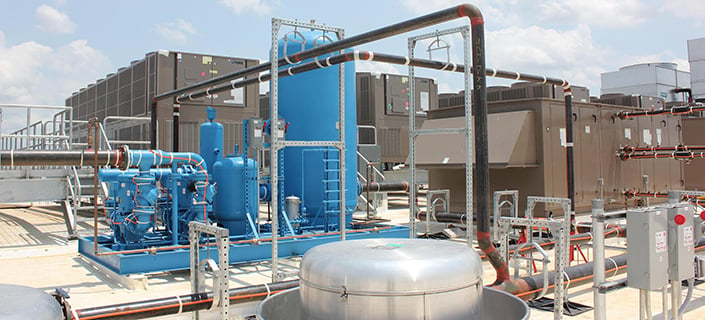The U.S. Environmental Protection Agency’s (EPA’s) plan to regulate carbon emissions is just the latest challenge facing the U.S. electric power system. Technological innovation is disrupting old ways of doing business and accelerating grid modernization. Earlier this year, AEE released Advanced Energy Technologies for Greenhouse Gas Reduction, a report detailing the use, application, and benefits of 40 specific advanced energy technologies and services. This post is one in a series drawn from the technology profiles within that report.

HVAC (heating, ventilation, and air conditioning) systems consist of air conditioners, heat pumps, boilers, furnaces, rooftop units, and chillers, as well as associated air handlers, ductwork, and water and steam piping. HVAC systems represent a significant portion of a building’s overall energy use. Improvements in efficiency derive from various subsystem technological innovations, such as variable speed drives (which reduce electricity use by electric motors) and increased heat exchanger surface area (which increase overall energy transfer from the fuel to the conditioned space). More advanced HVAC systems also have sensors and controls that communicate with energy management systems and other intelligent controls to further reduce energy usage.
HVAC systems are major capital items and have long service lives (20 to 40 years), which can slow the deployment of high-efficiency alternatives; high-efficiency alternatives are usually considered within normal equipment replacement cycles. Nevertheless, they can result in major energy use reductions, and are in wide use today at the commercial, industrial, and residential levels. For instance, Emory University installed two high-efficiency chillers, which helped to lower energy use for space cooling by nearly 50%. Additionally it reduced energy use by their conventional pump system, which controls temperature in HVAC systems, by 40% by installing high-efficiency and variable-speed pumps.
Heating and cooling is the largest single source of energy consumption in the residential and commercial sectors, accounting for roughly 50% of energy consumed by a typical U.S. home and 40% in commercial buildings.2,3 Chillers alone can account for 35-50% of a commercial building’s energy use.4 The International Energy Agency estimated that replacement of inefficient HVAC systems could reduce global CO2 emissions by as much as 2 gigatons by 2050, representing a 25% reduction in current building emissions.
